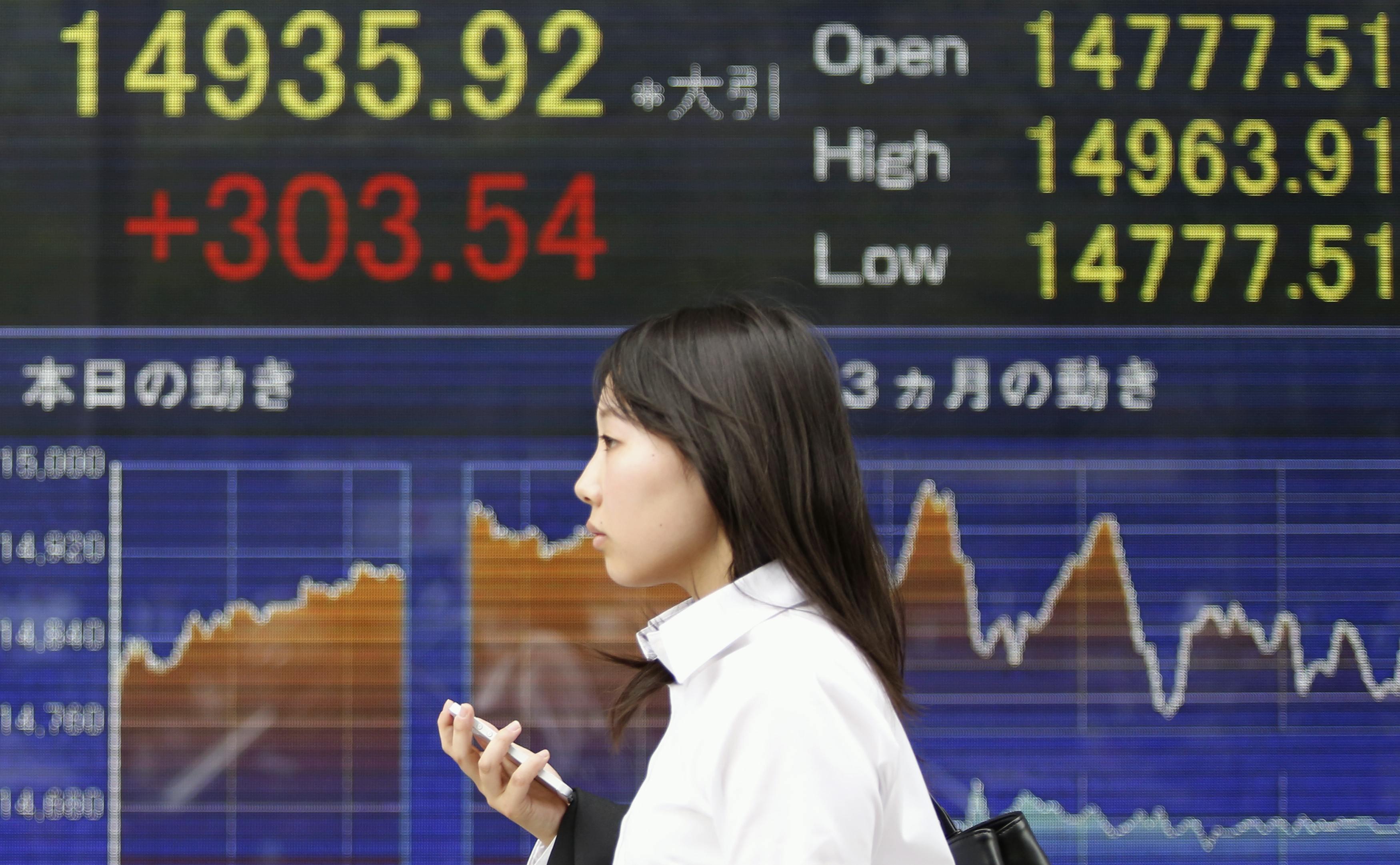Asia offers muted applause for ECB as US jobs loom
Bareksa • 06 Jun 2014

A woman holding her mobile phone walks past an electronic board showing Japan's Nikkei average outside a brokerage in Tokyo (REUTERS/Yuya Shino)
Stocks and bonds generally supported by ECB easing.
Bareksa.com - Asian markets firmed modestly on Friday as equity and bond investors offered only polite applause for the European Central Bank's latest stimulus package, while the euro went off-script in a vicious short-covering rally.
Trading was hesitant as attention quickly shifted to the U.S. payrolls report due later Friday where the outcome is considered even more uncertain than usual. While the median forecast is for a solid jobs gain of 218,000, estimates range from a little as 110,000 to as high as 325,000.
Japan's Nikkei gained 0.2 percent but again shied away from testing April's peak at 15,164. Speculation that more government pension funds will flow into the market helped sentiment somewhat.
MSCI's broadest index of Asia-Pacific shares outside Japan could only add a slight 0.18 percent.
Wall Street had notched up new records with the Dow up 0.59 percent and the S&P 500 0.65 percent, while the Nasdaq managed a 1.05 percent gain.
The German blue-chip DAX also reached historic highs and ended Thursday 0.4 percent firmer.
The gains came after the ECB cut interest rates to record lows and launched a series of measures to pump money into the sluggish euro zone economy.
For the first time, the ECB will charge banks for parking funds at the central bank overnight in an attempt to force them to lend to small- and medium-sized businesses.
Still, ECB President Mario Draghi implied this would be the low point for rates and the bank stopped well short of quantitative easing (QE) - printing money to buy assets.
Draghi did emphasise that more action would come if needed, but markets are only too well aware that it usually takes ages for the central bank to actually move.
The last time the ECB announced a big package was in August 2012 - making it almost two years between easings.
THE BIG SQUEEZE
Indeed, dealers noted that the new targeted liquidity offerings announced on Thursday would not be set until September and December, suggesting the ECB might be done for this year.
That could be one reason the euro recouped all its initial heavy losses to be up at $1.3660 on Friday, a huge reversal from Thursday's trough of $1.3505.
The bounce reaffirmed the strength of support around $1.3500 and could see the single currency test major chart resistance at $1.3688/90, a break of which would be bullish technically.
"Over the last few weeks we have been arguing that to push the euro meaningfully weaker, the ECB would have to surprise to the upside in terms of the quantity, quality and price of money provided," said Deutsche Bank strategist George Saravelos.
"We don't think the ECB has delivered across these fronts much beyond what the rates market has already priced," he argued. "We are worried about a squeeze higher, particularly given the currency's propensity to rise after every ECB meeting over the last 12 months."
The euro's rebound in turn pushed the dollar down across a host of currencies from sterling to the Swiss franc and Australian dollar. The dollar index sank back to 80.354 having been as high as 81.020 on Thursday.
The dollar's losses on the yen were more limited, easing around 20 pips or so to 102.40.
Global bond markets seemed moderately cheered that a major central bank was still having to ease policy, and yields were generally lower. The euro zone periphery benefited most with Spanish 10-year yields down 5 basis points at 2.83 percent and close to historic lows.
Yields on two-year U.S. Treasury notes dipped 2 basis points to 0.38 percent, while those on 10-year paper fell a tick to 2.58 percent.
Gold buyers were also encouraged by the prospect of yet lower rates for longer, and the precious metal jumped 1 percent to $1,253.30 in its biggest gain in three weeks.
Oil prices were mixed, with U.S. crude off 5 cents at $102.43, while Brent crude rose 10 cents to $108.89. (Source : Reuters)